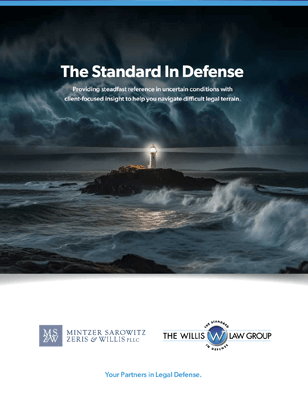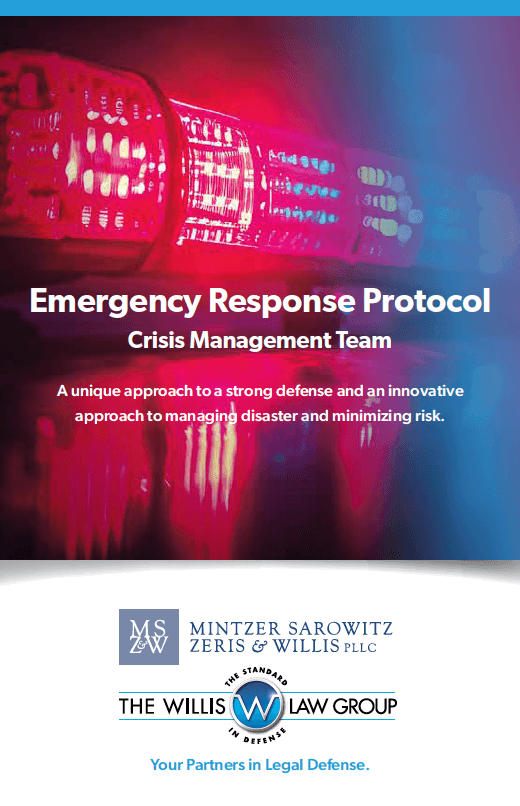GOING TO SCHOOL ON THE EXPANDED FMLA AND FFCRA
Sep 8, 2020 - News by Bradley Shafer
GOING TO SCHOOL ON THE EXPANDED FMLA AND FFCRA
By: Brad Shafer
 We hoped it would be over by now, but it is not. The same COVID-19 pandemic that wreaked havoc with the end of the 2019-2020 school year and summer day camp is still here. Now, the fall semester of the 2020-2021 school year is upon us and schools are still trying to grapple with in-person instruction. Employers should be ready for another round of requests for expanded FMLA and Emergency Paid Sick Leave (EPSL) under the Families First Response to Coronavirus Act (FFCRA).
We hoped it would be over by now, but it is not. The same COVID-19 pandemic that wreaked havoc with the end of the 2019-2020 school year and summer day camp is still here. Now, the fall semester of the 2020-2021 school year is upon us and schools are still trying to grapple with in-person instruction. Employers should be ready for another round of requests for expanded FMLA and Emergency Paid Sick Leave (EPSL) under the Families First Response to Coronavirus Act (FFCRA).
First, it must be noted that these new laws apply only to companies with 500 employees or less. Second, this is the same leave that was provided earlier this year. It did not renew or get supplemented. Therefore, qualifying employees are eligible for a total of 80 emergency paid sick leave hours and 12 weeks of expanded FMLA time. Two of those expanded FMLA weeks run concurrently with the paid sick leave. Thus, if an employee had to use any of the paid sick leave or expanded FMLA benefits at the end of the 2019-2020 school year or to accommodate the loss of summer camps and day cares, the employee only has whatever amount of time was left, if any, after taking that leave. And, to be clear, if the employer was large enough to be required to offer FMLA before the FFCRA was passed, its employees only have one bank of FMLA leave. The FFCRA did not give them an additional 12 weeks. In other words, if the employee took 8 weeks of FMLA leave because of a serious health condition, he only has 4 weeks left to use for child care issues.
Recently, the US Department of Labor issued additional guidance in regards to eligibility questions surrounding the use of expanded FMLA and paid sick leave. As a general rule, if the employee needs time off to care for a child due to a decision that was not made by the employee, if that employee has any time remaining, he may use it. For instance, if the local school is implementing a hybrid schedule where students will have in-person lectures at school on some days and then will have virtual lectures at home on others, the employee can use what remaining time he has for child care purposes on the days when his child is at home for virtual lectures.
Some schools are allowing parents to completely opt out of in-person lectures for their child, choosing instead for the child to attend five days of virtual lectures from home. Leave is not available to the employee in this case because it was the employee, not a governmental agency or physician, that chose to keep the child out of school. Thus, only when the decision was not made by the employee can the employee qualify for leave. Accordingly, unless the child’s physician has placed him into quarantine or there is some other qualifying reason as to why the child must opt out of in-person lectures, no leave is available under the FFCRA.
When discussing leave options with employees for the upcoming school year, employers should keep in mind that this leave will likely be intermittent. This is especially true of the hybrid school model. But do not forget, the leave is only available when the employee is unable to telework. For instance, if the employee can work at home while his child is listening to school on the computer, the employee does not need leave for that period of time. Also, if the employee is able to use his regularly scheduled lunch break to prepare and provide lunch for his child during the virtual school day, leave may not be needed for that time period either. Thus, it may turn out that the only leave that is necessary is for the time period when virtual lectures end until the end of the regular work day. And, that assumes that the employee has not found a babysitter or other child care option to fill that gap. Whatever the leave requirements may be, if it is intermittent, employers should reduce the leave schedule to writing and have it signed by the employee so there can be no misunderstanding as to when the employee is on leave and when he is not.
In the end it is expected that this will be another tumultuous time. Parents who exhausted all of their leave at the end of the last school year or during the summer will be in a jam as to how to accommodate virtual school and work. Others will have anxiety as they have limited time remaining from earlier leaves to accommodate these school issues. That anxiety will likely be compounded as the schools are expected to vary their schedules from week to week depending upon the number of COVID-19 cases in the local community. Employers must remain patient and may need to be willing to consider alternative work arrangements beyond those set forth in the FFCRA.



